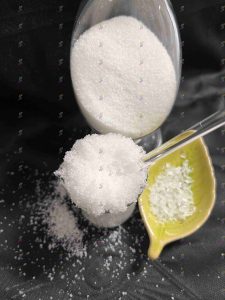Sodium polyacrylate, often referred to as a superabsorbent polymer (SAP), can absorb an extraordinary amount of water, up to 200-1000 times its own weight. This makes it highly useful in products such as diapers, adult incontinence pads, and other water-absorbing materials.

Proper Disposal of Sodium Polyacrylate
To dispose of sodium polyacrylate safely, follow these guidelines:
- Household Waste: Small quantities can be disposed of with regular household trash, which will end up in a landfill.
- Professional Waste Services: For larger amounts, contact local waste disposal services for proper disposal instructions.
Methods to Dissolve Sodium Polyacrylate
While sodium polyacrylate doesn’t dissolve in water, it can be broken down using certain chemicals:
- Salt (NaCl): Adding a concentrated salt solution will cause the polymer to release absorbed water and contract.
- Calcium Chloride (CaCl₂): This chemical is even more effective than salt for breaking down the polymer gel.
Effective Removal of Sodium Polyacrylate
To remove sodium polyacrylate, consider the following methods:
- Salt Solution: Prepare a strong saltwater solution and mix it with the polymer gel. This will cause the gel to shrink and release the water it has absorbed.
- Chemical Disposal: For larger quantities, consult with local waste management authorities for appropriate chemical disposal procedures.
Creating Fake Snow with Sodium Polyacrylate
Sodium polyacrylate can be used to create a realistic fake snow, ideal for decorations or sensory activities. Here’s how you can make it:
- Materials:
- Sodium polyacrylate (available as a powder or extracted from products like diapers)
- Water
- Mixing bowl
- Instructions:
- Extract Sodium Polyacrylate: If using diapers, carefully open them and collect the powder inside.
- Combine with Water: Place the sodium polyacrylate powder in a bowl. Gradually add water while stirring.
- Observe the Reaction: The powder will rapidly absorb the water and expand into a fluffy, snow-like material.
- Adjust the Texture: Add more water for a wetter consistency or more powder for a drier texture.
This synthetic snow is perfect for decorative displays, sensory play, and educational projects. Handle it carefully, avoiding ingestion and contact with eyes.

